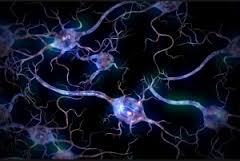ET4130 Bioelectricity
Course main goal
A basic understanding of bioelectric phenomena (like the Action Potential, the ElectroNeuroGram, ElectroEncephaloGram, ElectroCardioGram etc.) and their mathematical analysis, based on biophysical/mathematical source models and volume conduction theory.
Course description
In this course the electrophysiologic and biophysical processes underlying the generation of bio-electrical activity in particularly the brain and the heart are presented in relation to the potential differences that can be measured on the body surface, the ENG, the EEG and the ECG, respectively. These electrical signals may provide information on the (patho)physiological condition of the corresponding organ. Also, the principles and practicalities of artificial neural stimulation are dealt with. As a general introduction the theory of volume conduction of ionic currents, based on the quasi-static expression of Maxwell's equations, is presented. This theoretical framework is then applied to nerves and neurons. The aim is to obtain a basic understanding of the electrical phenomena involved, emphasizing both on a quantitative description and a model-oriented approach. This knowledge will serve as well as a basis for understanding the clinical measurement methods of ENG, EEG and ECG, and to improve the methods for measurement and analysis of these bio-electrical signals. The course also serves as an introduction to the extensive international scientific literature on bio-electric phenomena.
Study Goals
Upon successful completion of this course, the student:
- Is able to handle electromagnetic theory with respect to bio-electrical sources, volume conduction and voltage registration;
- Knows and understands the structure and operation of bio-electrical sources at 3 levels: cells, tissues and organs;
- Knows and understands bio-electrical and bio-magnetic measurement methods and their history;
- Understands practical bio-electrical diagnosis methods, in particular ECG (EKG), EEG (and MCG and MEG), and ENG;
- Knows and understands neurostimulation and neuroprosthetics;
- Is able to conduct a critical analysis on the above topics
Teachers
dr. Vasiliki Giagka (BE)
Design and fabrication of active implantable devices; Analog and mixed-signal integrated circuits for biomedical applications
dr. Tiago Costa (BE)
Analog and mixed-signal circuit design, Microfabrication, Microsystem Integration, Focused ultrasound neuromodulation, Neuroelectronics, Brain stimulation.
dr. Achilleas Savva (BE)
Design, fabrication and characterization of organic optoelectronic devices for bioelectronic applications; 3D bioelectronic models for stem cell engineering.
Last modified: 2024-07-05

Details
| Credits: | 3 EC |
|---|---|
| Period: | 0/0/3/0 |
| Contact: | Vasiliki Giagka |